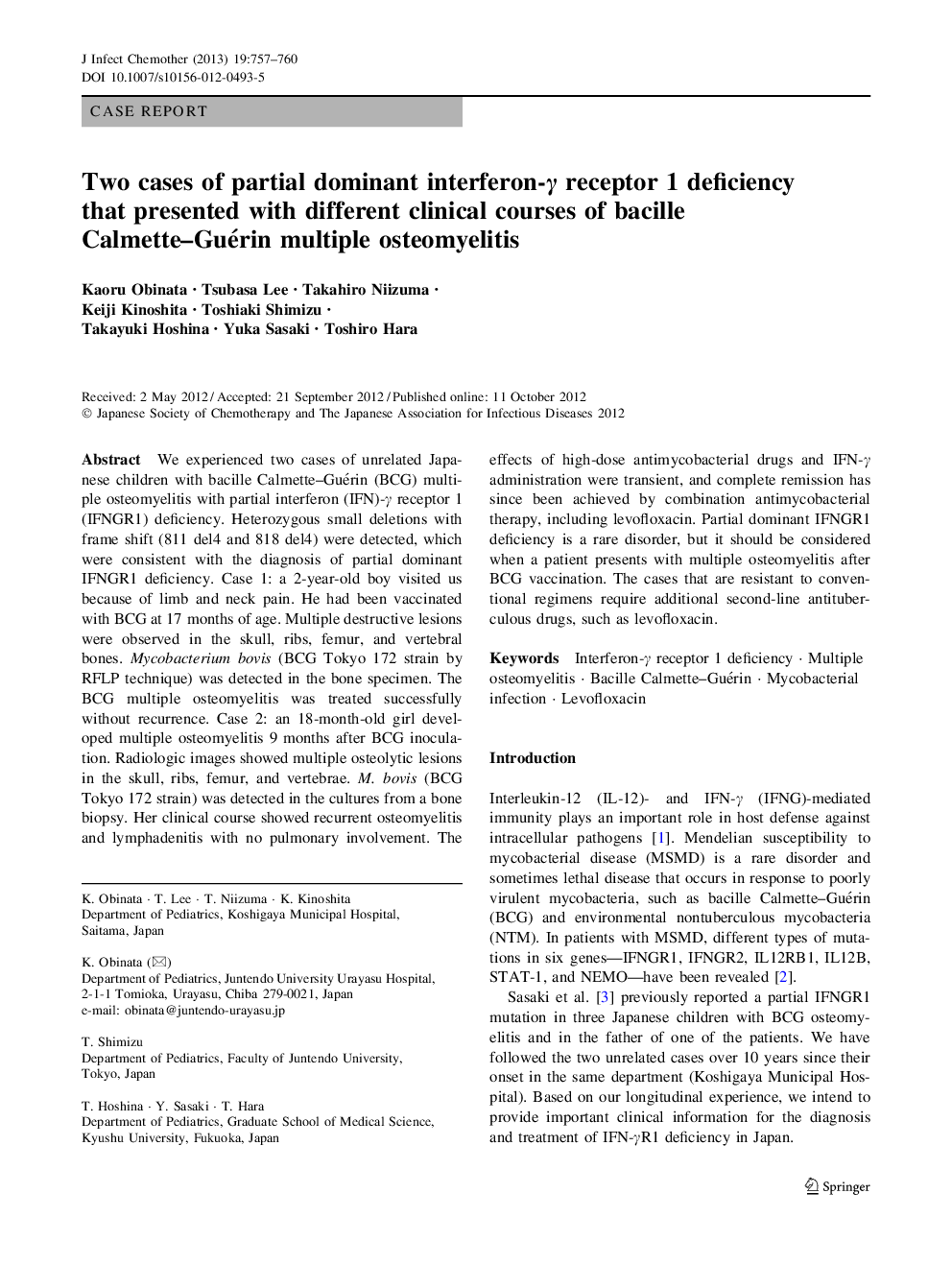| Article ID | Journal | Published Year | Pages | File Type |
|---|---|---|---|---|
| 6123969 | Journal of Infection and Chemotherapy | 2013 | 4 Pages |
Abstract
We experienced two cases of unrelated Japanese children with bacille Calmette-Guérin (BCG) multiple osteomyelitis with partial interferon (IFN)-γ receptor 1 (IFNGR1) deficiency. Heterozygous small deletions with frame shift (811 del4 and 818 del4) were detected, which were consistent with the diagnosis of partial dominant IFNGR1 deficiency. Case 1: a 2-year-old boy visited us because of limb and neck pain. He had been vaccinated with BCG at 17 months of age. Multiple destructive lesions were observed in the skull, ribs, femur, and vertebral bones. Mycobacterium bovis (BCG Tokyo 172 strain by RFLP technique) was detected in the bone specimen. The BCG multiple osteomyelitis was treated successfully without recurrence. Case 2: an 18-month-old girl developed multiple osteomyelitis 9 months after BCG inoculation. Radiologic images showed multiple osteolytic lesions in the skull, ribs, femur, and vertebrae. M. bovis (BCG Tokyo 172 strain) was detected in the cultures from a bone biopsy. Her clinical course showed recurrent osteomyelitis and lymphadenitis with no pulmonary involvement. The effects of high-dose antimycobacterial drugs and IFN-γ administration were transient, and complete remission has since been achieved by combination antimycobacterial therapy, including levofloxacin. Partial dominant IFNGR1 deficiency is a rare disorder, but it should be considered when a patient presents with multiple osteomyelitis after BCG vaccination. The cases that are resistant to conventional regimens require additional second-line antituberculous drugs, such as levofloxacin.
Related Topics
Life Sciences
Immunology and Microbiology
Applied Microbiology and Biotechnology
Authors
Kaoru Obinata, Tsubasa Lee, Takahiro Niizuma, Keiji Kinoshita, Toshiaki Shimizu, Takayuki Hoshina, Yuka Sasaki, Toshiro Hara,
